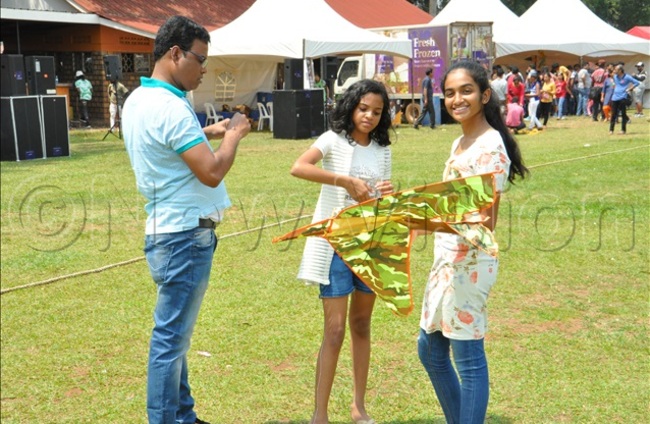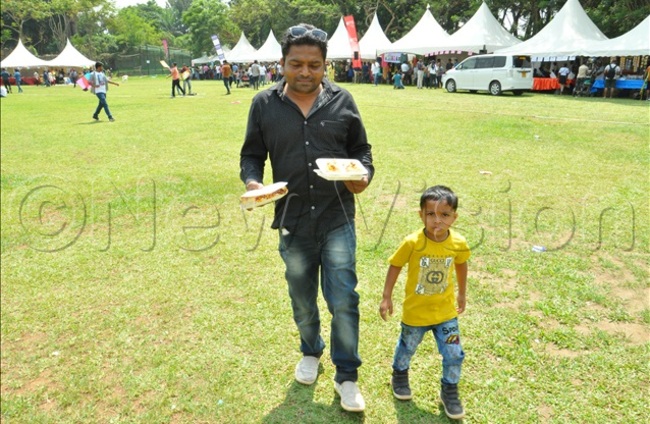Colorful Kite flying festival attracts hundreds
A number of participants were seen struggling with having their kite fly just a meter into the air.
Kyambogo University Cricket square was awash with various kites colouring up the skies last weekend. This was at the 15th edition of the International Kite Flying Festival. Being a family event, the festival attracted various families with each having a representative in the kite flying exercise.
The event was kicked off at midday with various participants setting up their kites, coloured differently. Each colour meant something special to a particular family and to some, yellow represented luck and blessings.
 A mother and her child making their kite. Photo by By Reagan Ssempijja
A mother and her child making their kite. Photo by By Reagan Ssempijja
Right from the onset, the intention for every participant was clear. It was to have their kites soar above everyone else's. This task, however, proved to be a tug of war for the majority, especially those who had clearly last flew a kite while in their childhood days.
A number of participants were seen struggling with having their kite fly just a meter into the air. However, giving up was not part of the game. By 3:00 pm, it was clear whose kite was winning and this raised a lot of hope and anticipation.
Those who failed to fly their kites high up in the air had no option but to watch the rest and perhaps learn from them. One of the participants and perhaps the most talented kite flyer, Rajesh Prajat, attracted a lot of attention from the crowd as many struggled with their eyes to see his kite that was almost becoming invisible because of how high it had gone.

For the children, the Lion-shaped kite was the highlight of everything that moved around in the skies that afternoon. They marvelled about the uniqueness of the Kite and kept staring at it.
Apart from the kite flying, the festival also had a display of various food cuisines and delicacies that were available for sale. As the tradition of the festival dictates, there was offering of the Til-Gul Laddoo (sweets made of sesame seeds) among the participants. This is a way of wishing one another well.

The organizers, Indian community and Diamond Trust Bank, gave out various gifts like power banks to the best performers in the kite flying exercise. Away from the Kite flying and food, Fashion was another highlight of the day as various revellers fronted their eye-catching fashionable dresses.
Later in the day, the festival was graced by the Indian High Commissioner to Uganda, Shri Ravi Shankar. Shankar watched and admired how talented majority of the participants were at flying kites.
Background of the festival
The festival marks the transition of the sun into the Makara Rashi, which is the zodiac sign of Capricorn. In quite a few states in India, Makar Sankranti is considered as a major harvest festival.
The festival is significant, as it serves as a commemoration to Goddess Sankranti's triumph over the evil and brutal Rakshasa Sankarasur (Demon), who would torture and kill humans. It is also a festival where people bond and bury their hatchets, offering each other sweets in an attempt to spread joy all around.

Through India's history, it is said that India created the tradition of kite flying due to the kings and Royalties later followed by Nawabs who found the sport entertaining and as a way to display their skills and power.
It began as being a sport for kings, but over time, as the sport became popular, it began to reach the masses.
The first International Festival was celebrated in 1989 when people from all across the globe participated and showcased their innovative kites. In the recent 2012 festival in India, the International Kite Festival was inaugurated by Prime Minister Narendra Modi and was then officially marked on the calendar.